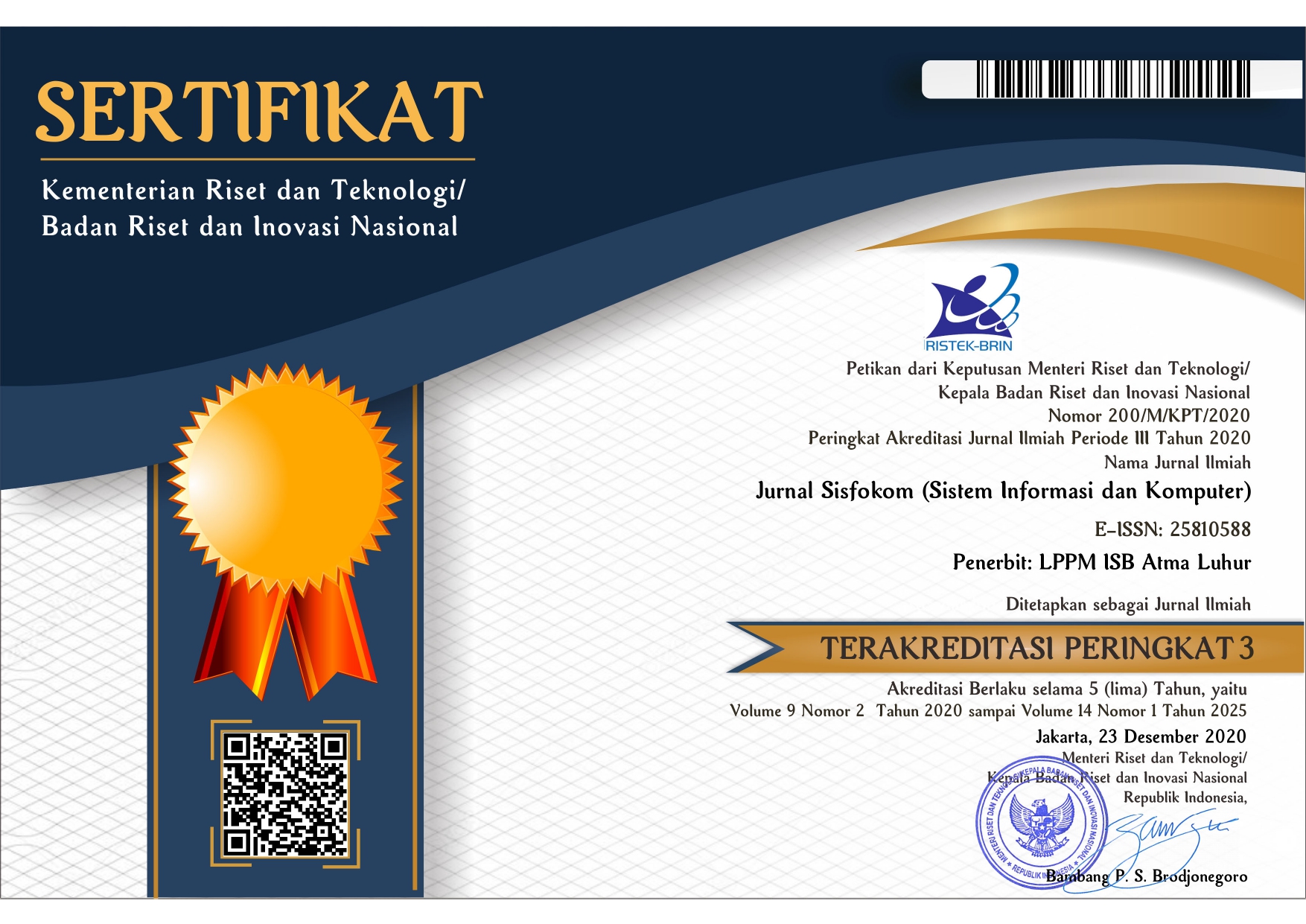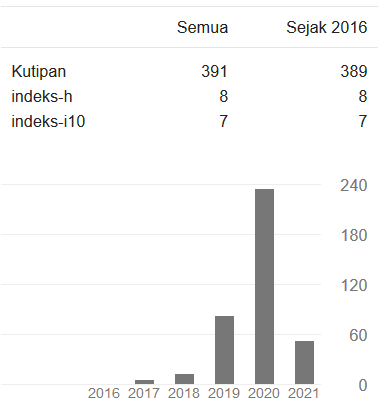Cybersecurity Vulnerability Behavior Scale in College During the Covid-19 Pandemic
DOI:
https://doi.org/10.32736/sisfokom.v9i3.1021Keywords:
Cybersecurity, RScB, Vulnerability Scale, Cybercrime, Covid-19Abstract
The penetration of Indonesian internet users in first quarter of 2020 has increased by 17 percent compared to 2019. Based on Google Consumer Barometer in 2018, many 79% of Internet users in Indonesia use the internet on a daily basis. During the Covid-19 Pandemic, universities had to do Study From Home and Work From Home. This resulted, use of information technology and computers also increasing. This increase will have an impact on the level of cybercrime vulnerability. The scale of cyber vulnerability is needed to measure level of cybersecurity in universities, especially in data managers. There are five scales, Very Safe, Safe, Vulnerable, Very Vulnerable, and Dangerous. Where the scale is used in negative and positive statements. The measurement results show an average value of 3.3 or a vulnerable scale. Total average value of negative statements is 2.53 or scale close to vulnerability. So it is necessary to socialize the importance of cybersecurity to minimize occurrence of cybercrime.References
Hootsuite, We Are Social, "Digital 2020. Indonesia," Hootsuite, United State, 2020.
A. Darmayani, Siberpedia Panduan Pintar Keamanan Siber, Yogyakarta: Center for Digital Society (CfDS), 2019.
L. A. S. R. C. N. E. E. Harjinder Singh Lallie, "Cyber Security in the Age of COVID-19: A Timeline and Analysis of Cyber-Crime and Cyber-Attacks during the Pandemic," University of Strathclyde Glasgow, United Kingdom, 2020.
P. Mahadevan, "Cybercrime Threats during the COVID-19 pandemic," Global Initiative Against Transnational Organized Crime, Switzerland, 2020.
J. Wiggen, "The impact of COVID-19 on cyber crime and state-sponsored cyber activities," Konrad-Adenauer-Stiftung, German, 2020.
S. N. B. Z. Navid Ali Khan, "Ten Deadly Cyber Security Threats Amid COVID-19 Pandemic," 2020.
S. N. B. J. Navid Ali Khan, "UAV’s Applications, Architecture, Security Issues and Attack Scenarios: A Survey," 1st International Conference on Technology Innovation and Data Sciences (ICTIDS), vol. 1, no. 1, 2019.
C. Y. P. Robbi Akramana, "Pengukuran Kesadaran Keamanan Informasi Dan Privasi Pada Pengguna Smartphone Android Di Indonesia," Jurnal Sistem Informasi Bisnis, vol. 8, no. 2, pp. 115-122, 2018.
D. J. P. Tinggi, Panduan Penyelenggaraan Pembelajaran Semester Gasal 2020/2021 di Perguruan Tinggi, Jakarta: Direktorat Jenderal Pendidikan Tinggi Kemdikbud RI, 2020.
E. P. Serge Egelman, "Scaling the Security Wall: Developing a Security Behavior Intentions Scale (SeBIS)," ACM Conference on Human Factors in Computing System, pp. 2873-2882, 2015.
L. Hadlington, "Human factors in cybersecurity; examining the link between Internet addiction, impulsivity, attitudes towards cybersecurity, and risky cybersecurity behaviours," Heliyon, p. e00346, 2017.
V. Herlina, Panduan Praktis Mengolah Data Kuesioner Menggunakan SPSS, Jakarta: Elex Media Komputindo, 2019.
L. R. U. Wiratna Sujarweni, The Master Book of SPSS. Pintar Mengolah Data Statistik untuk Segala Keperluan Secara Otodidak, Yogyakarta: Start Up, 2019.
Downloads
Published
Issue
Section
License
The copyright of the article that accepted for publication shall be assigned to Jurnal Sisfokom (Sistem Informasi dan Komputer) and LPPM ISB Atma Luhur as the publisher of the journal. Copyright includes the right to reproduce and deliver the article in all form and media, including reprints, photographs, microfilms, and any other similar reproductions, as well as translations.
Jurnal Sisfokom (Sistem Informasi dan Komputer), LPPM ISB Atma Luhur, and the Editors make every effort to ensure that no wrong or misleading data, opinions or statements be published in the journal. In any way, the contents of the articles and advertisements published in Jurnal Sisfokom (Sistem Informasi dan Komputer) are the sole and exclusive responsibility of their respective authors.
Jurnal Sisfokom (Sistem Informasi dan Komputer) has full publishing rights to the published articles. Authors are allowed to distribute articles that have been published by sharing the link or DOI of the article. Authors are allowed to use their articles for legal purposes deemed necessary without the written permission of the journal with the initial publication notification from the Jurnal Sisfokom (Sistem Informasi dan Komputer).
The Copyright Transfer Form can be downloaded [Copyright Transfer Form Jurnal Sisfokom (Sistem Informasi dan Komputer).
This agreement is to be signed by at least one of the authors who have obtained the assent of the co-author(s). After submission of this agreement signed by the corresponding author, changes of authorship or in the order of the authors listed will not be accepted. The copyright form should be signed originally, and send it to the Editorial in the form of scanned document to sisfokom@atmaluhur.ac.id.






